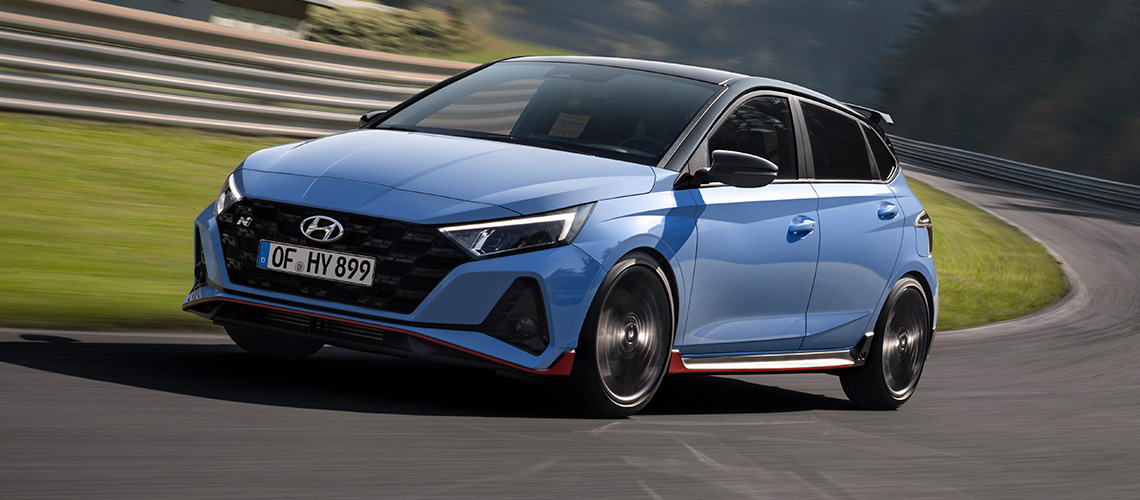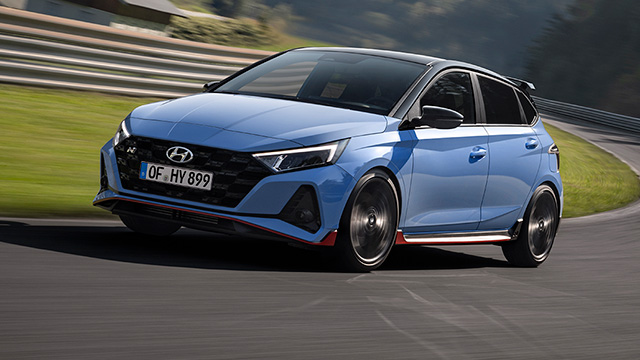Words by Tim Pomroy & Kris Ashton
We last compiled our last best drives of the year during the unprecedented restrictions of the COVID pandemic. When the time came to do a follow-up we hoped it would be under more normal circumstances, but while the harshest COVID constraints were behind us, ‘normal’ is certainly not a word anyone in the car industry would choose to describe 2022.
Supply chain issues – a hangover from the pandemic further exacerbated by other geopolitical forces – led to bizarre scenarios that would have been unthinkable only a few years earlier. Test vehicles for the motoring press were in limited supply, models expected to be available in Australia suddenly weren’t, and dealer delivery times blew out to a year or more.
Most surreal of all, some second-hand cars ended up listing for more than their new-model equivalents because they circumvented wait times and the limited model options.
The upshot was that an already uncertain and erratic year culminated in a sudden flurry of car launches as manufacturers tried to make up for lost time and restore some semblance of business normality. Reflecting on such a year with a view to picking the opals from the potch, then, proved no simple task. But ultimately, the vehicles you’ll find in the following pages stood out to us. It’s quite an eclectic bunch – some were selected for pushing the boundaries of what a car can be, some for refining and perfecting current vehicle technology, while others evoked the best traits of cars from yesteryear. Whether you agree or disagree, we hope you find our list entertaining and informative.
Hyundai i20 N
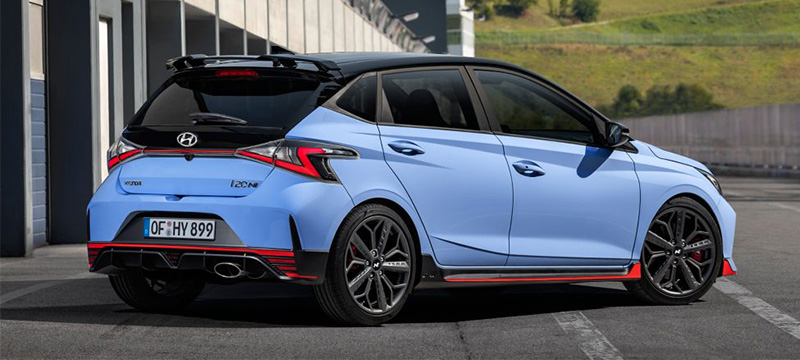
The adage ‘motorsport improves the breed’ must surely apply to Hyundai, a brand better known until recent times for its SUV line-up. The company revved things up a decade or so ago, establishing the Hyundai N Performance division and giving punters their first taste in 2018 with the introduction of the i30 N – a sizzling drive that matched the spiritual leader of the pack, the Volkswagen Golf GTI, in every facet. Sporty N-Line variants now feature across the Hyundai range, with the i20 N and i30 N sedan continuing to flesh out the N Performance line-up (with more to follow).
The i20 N is based on the i20 hatch sold overseas. It’s a shame it’s not in the Australian line-up, as it’s a sharp looker, but our zombie-like focus on all things SUV meant the business case didn’t stack up. Luckily, the motorsport types at Hyundai HQ were able to procure a meagre allocation of the i20 N hot hatch for a lucky few at the start of 2022. Unfortunately, the order books are now closed until supply increases.
At the heart of the i20 N is a punchy 150kW/275Nm 1.6-litre turbo engine matched to a six-speed manual transmission, with engine torque transferred to the front wheels through a mechanical limited slip differential. The powertrain features in a number of Hyundai and Kia derivatives (mostly using a DCT transmission) and is well-proven, while the hatch’s relatively light 1210kg kerb weight ensures a useful power-to-weight ratio. The body shell has additional bracing and countless hours of testing at the legendary Nürburgring circuit in Germany honed the suspension settings.
With features such as rev matching (activated via a steering wheel button to automatically blip the engine revs on downshift), a multi-function drive mode system, and a turbo overboost function that briefly increases torque to 304Nm, there’s plenty to keep the enthusiast busy. But the real key to its success is the i20 N’s overall balance and poise, while somehow managing to keep the standard features list comprehensive with inclusions such as a 10.25-inch touchscreen, an eight-speaker Bose sound system and hip-hugging sports seats. That’s not an easy task to achieve at a relatively affordable price and the i20’s styling has only improved with the N’s sporty body kit, which includes a twin-level rear spoiler and large bore exhaust system.
Not so long ago, there were several choices if you were after a small, affordable hot hatch, yet today it’s really only Hyundai flying the flag at a sub-$35k price point that serves the next generation of driving enthusiasts. – Tim Pomroy
Mitsubishi Outlander
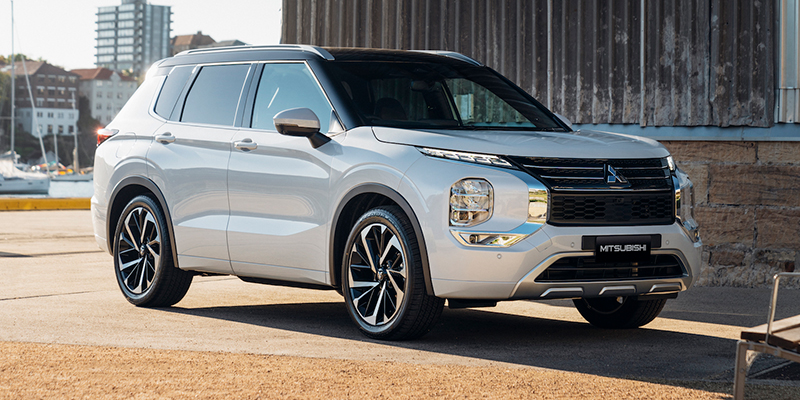
If our annual best drives included a ‘most improved’ category, it’s a fair bet the new Mitsubishi Outlander would get the gong. While cars that exhibit the absolutes (fastest, quietest, roomiest, best-looking, most economical) tend to get the plaudits, there’s a lot to be said for a vehicle that’s above average in everything – a fitting description for the 2022 Outlander.
Back in 2018, I was in the market for a mid-sized SUV and had whittled my options down to a Mitsubishi Outlander and Nissan X-Trail. Along the auto alley near my place, the Nissan and Mitsubishi dealerships were in walking distance of one another, so I managed back-to-back drives of each. Performance was comparable and the Outlander had a slight edge in technology, but on almost every other measure – seat comfort, driving position, interior styling, handling, value – I preferred the X-Trail.
Given that experience, I was curious indeed to get into the 2022 Outlander and see what changes Mitsubishi had rung on one of its top-selling models. The answer is ‘a great many’.
Handling was the previous Outlander’s weakest point – when trying to negotiate a corner quickly, the high centre of gravity and chassis torsion saw it pitch in a way few SUVs do any more. That has now been reined in and, while it’s still not exactly sedan-like, the driving experience is more stable and predictable.
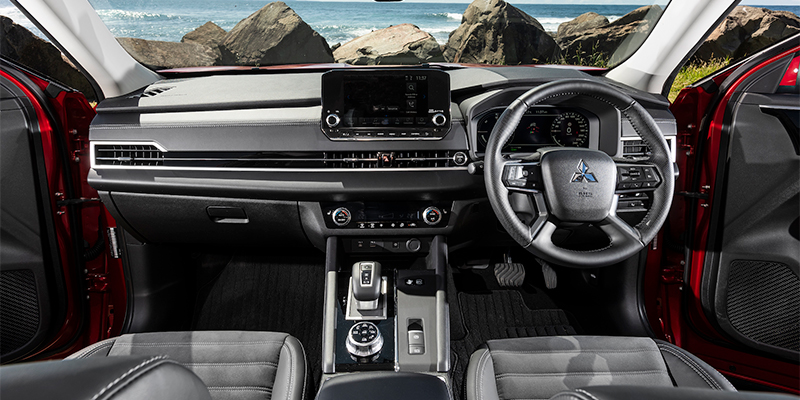
The other key improvement is to the interior. The old model’s cabin and switchgear presented as cheap and uninspired and didn’t wear particularly well. While only time will show how well this Outlander stands up to wear and tear, the interior styling is up-to-date and the dashboard and instruments demonstrate an impressive cohesion and functionality.
The PHEV variant is the icing on the cake. Mitsubishi has been a pioneer in the EV and hybrid space for more than a decade and its original Outlander PHEV showed electrified vehicles needn’t look like a science experiment or cost the earth. The updated PHEV was more of the same only better, with a longer pure EV range and a more refined hybrid system.
Motoring writers are often asked to recommend cars to buy, and the Mitsubishi Outlander makes a surprising jump towards the top of my mid-sized SUVs list. – Kris Ashton
Polestar 2
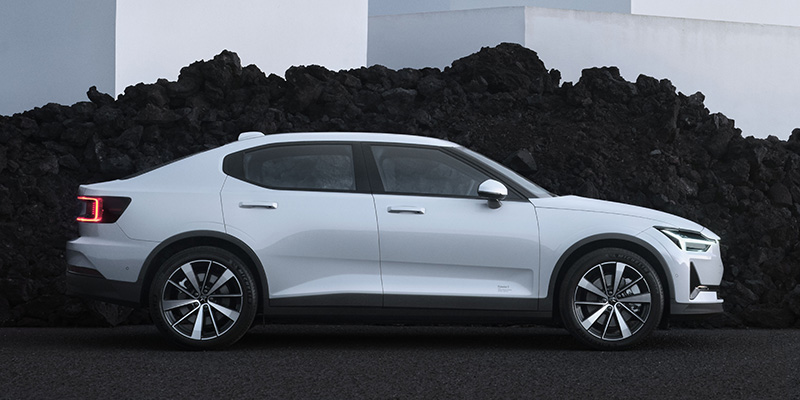
Launching an all-new brand – and an EV at that – in the midst of a pandemic would test the mettle of the most seasoned PR department, yet that’s what Volvo’s sub-brand, Polestar, managed to pull off at the end of 2021. Consumers had to wait until mid-year for stock to flow in decent numbers, but their patience was rewarded with an exciting entrant in the EV space.
Mid-sized sedan in proportions, the chunky looking four-door liftback stands out of from the crowd, thanks largely to the ‘hammer of Thor’ daytime running lights and a full LED rear light bar. With the Polestar 2’s Swedish pedigree, safety is paramount and the range achieved a five-star ANCAP rating. Buyers seeking additional safety kit can option it with the Pilot Pack, which adds blind spot monitoring, front and rear cross traffic alert, adaptive cruise control, and bending LED headlamps.
The interior design eschews the ‘futuristic’ visions of its EV contemporaries somewhat, with a well-thought-out conventional electronic instrument cluster ahead of the driver and most functions operated via the 11.15-inch central touchscreen. The three-model line-up starts at $63,900 for a standard range (470km) single motor, while the long range (540km) single motor with a larger 78kWh battery is $68,400.
The jewel in the crown is the long range dual motor priced at $73,400. It uses two electric motors to produce 300kW and delivers a range of 480km. Opting for the Performance Package ($8000) only available on dual motor variants adds 20-inch alloys, Brembo brakes and Öhlins dampers. It’s a subtle package and, apart from the gold-painted brake callipers and gold seatbelt webbing, it’s the classic wolf in sheep’s clothing.
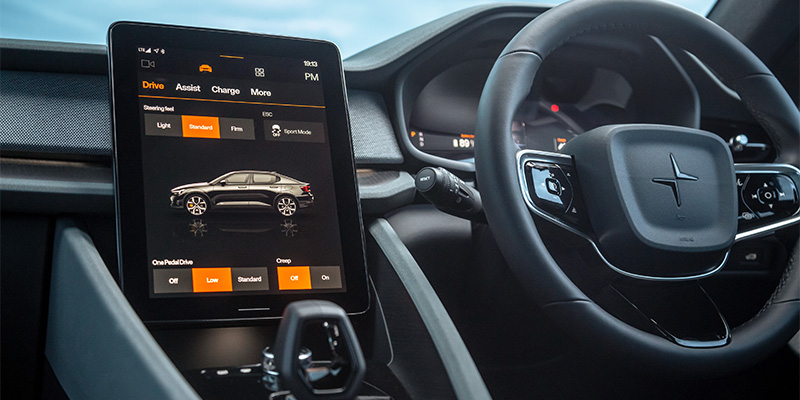
Polestar was Volvo’s performance arm before it was sold to Geely Auto Group, and that sporting DNA has found a home in the Polestar 2. The dual motor sprints to 0–100km/h in 4.7 seconds and the suspension settings are firm rather than cossetting, making it a little fidgety over rougher surfaces. Out on the open road is where it shines and the Brembo brakes are meaty and reassuring. Energy recuperation is adjustable for ‘bite’ and negates the excellent brake package somewhat, although part of the attraction of driving an EV is minimising traditional braking (and the default system setting is excellent).
The Polestar 2 provides an enticing option in the growing EV space. It’s an engaging car, one that feels as though it has been designed largely for driver enjoyment. – Tim Pomroy
Kia Carnival
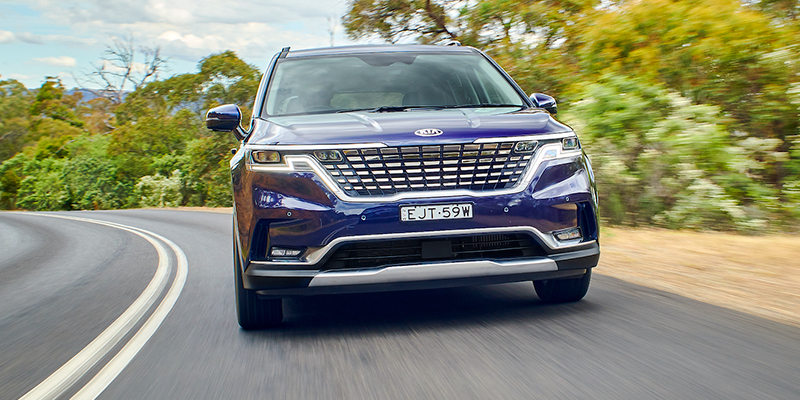
People movers were as welcome as acne in the early days and, rather than suffer the indignity, many families compromised, purchasing huge 4WDs with a third row crammed into the cargo area. Toyota changed the market with the more stylish Tarago before Kia entered the fray in 1999. From humble beginnings, the Carnival improved with each generation and today the design is laser-focused on the task at hand – carrying seven or eight, plus luggage, in comfort.
I tend to start a people mover review from the third row and work forward, and the Carnival’s design pays dividends from the outset. Sliding side doors (electrically operated on mid- and high-spec models) and a low step in make it easier to access the second and third row, which are spacious and comfortable for adults and feature dedicated air-con vents and cup holders. The second-row seats are configurable in several ways and the middle seat can be removed, turned around or converted into a centre table, while the third row folds flat into the floor for a substantial cargo area. Child restraint anchor points are fitted to all three second-row positions and two are fitted to the third row, providing maximum versatility.
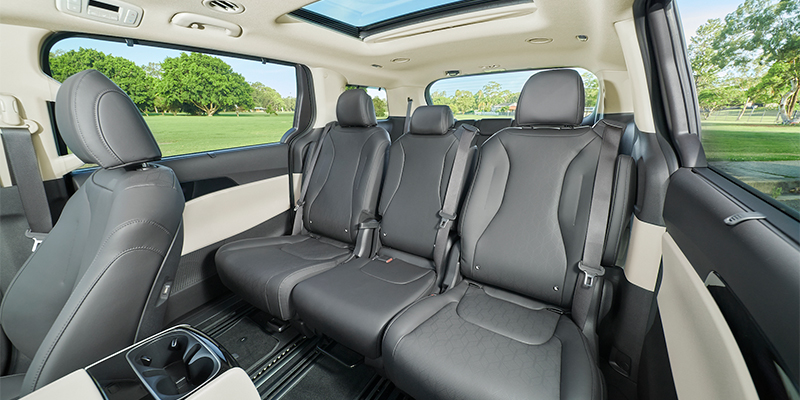
The range is available in four specification levels with petrol and diesel powertrains (the latter an extra $2000) starting at $47,480 for the S, $52,980 for the Si, and $57,780 for the SLi, with the Platinum $65,500. Using the Kia Sorento SUV platform as a foundation, the familiar engines are a 3.5-litre V6 petrol and 2.2-litre turbo diesel, with eight-speed transmissions and a clamed fuel consumption of 9.7L/100km for the petrol and 6.5L/100km for the diesel. Despite its extra upfront cost, the diesel’s torque increase is an asset when you’re driving with a full complement out on the open road, and you will regularly see fuel consumption close to the claimed figure.
Not surprisingly, it’s a big unit, yet it delivers an agreeable balance between ride and handling, absorbing bumps and corrugations nicely and insulating occupants over most surfaces while not becoming too roly-poly through corners. A turning circle of 11.4 metres belies its size in the car park and light steering makes the task easier, too.
This is a segment where practicality is the main priority, but the Carnival’s strong styling means it doesn’t want for visual presence. A seven-year warranty and a reasonable capped servicing price schedule further sweeten the deal. – Tim Pomroy
Toyota LandCruiser
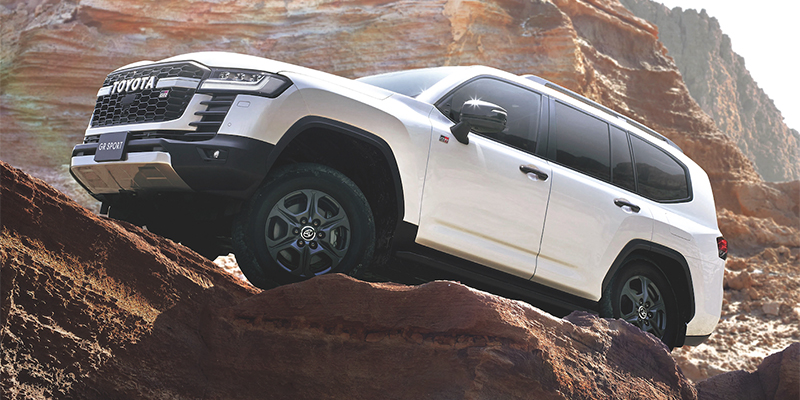
‘If you’re onto a good thing, stick to it’ sums up the 300 Series Toyota LandCruiser perfectly. The outgoing 200 Series first saw light in 2007 and was honed and massaged with upgrades during the ensuing 15 years. The 300 Series has had a long gestation period, with Australian and Japanese engineers refining every aspect of its design. While it might look similar to untrained eyes, it’s a completely different beast underneath.
A new 3.3-litre twin turbo diesel engine replaces the much-loved 4.5-litre V8, a move that rang alarm bells with the towing fraternity who worshipped its power and torque. They needn’t have worried, however, as the smaller engine has 13.5 per cent more power (227kW) and 7.7 per cent more torque (700Nm), and is matched to a new 10-speed automatic that Toyota claims can shift twice as quickly as the old six-speed. Another upside is a 6.3 per cent improvement in fuel consumption, now a claimed 8.9L/100km. Additional bracing around the tow bar mounting points, while not increasing its 3500kg braked tow rating, allays any concerns about the 300 Series’ ability to tow a big rig.
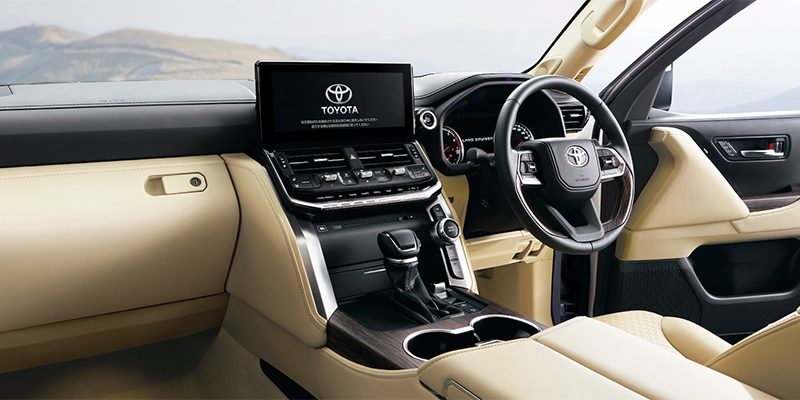
The front and rear track have been increased to assist with stability, while the revised suspension features upgraded springs and dampers with aluminium used to reduce unsprung weight. On-road, the package has improved immensely. It’s less spongy and pitchy through the corners, while the steering is more accurate, belying the LandCruiser’s ample proportions. This newfound precision extends to the powertrain. The engine (with 700Nm available from just above idle) is quieter and more refined and the auto gearbox feels strong in all respects, with Toyota’s claims of quicker shifting noticable during highway cruising.
A five-star ANCAP rating covers all models except the GX Sport, which remains unrated due to slight specification differences. Pricing has increased considerably, with the entry-level GX starting at $89,181 and the rest of the range, including the popular GXL, all over $100,000. Standard fare in the higher spec VX includes a 12.3-inch infotainment screen with satellite navigation, 10-speaker Pioneer audio, self-levelling bi-LED headlamps, a sunroof, and premium 18-inch alloys (which go some way to justifying its $12,000-plus premium over the GXL).
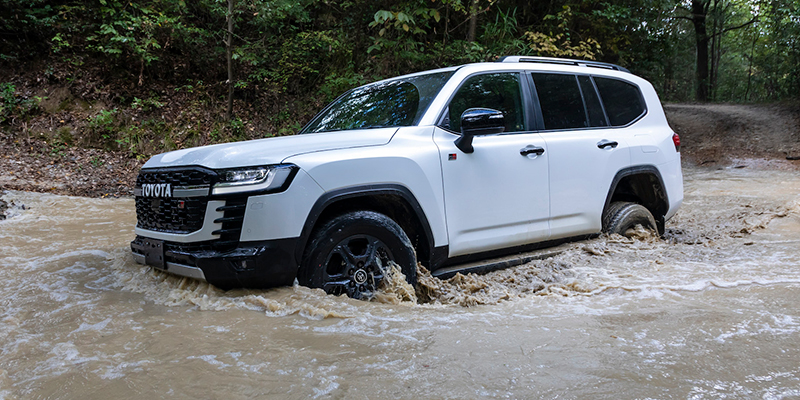
If your family is serious about going off the beaten track, the LandCruiser’s top off-road pedigree is tough to pass up, provided you can get your hands on one of these highly sought-after vehicles. What’s more, Toyota’s extensive rural dealer network is the best in the business – yet another reason behind the brand’s undying popularity across the country. – Tim Pomroy
Genesis GV70
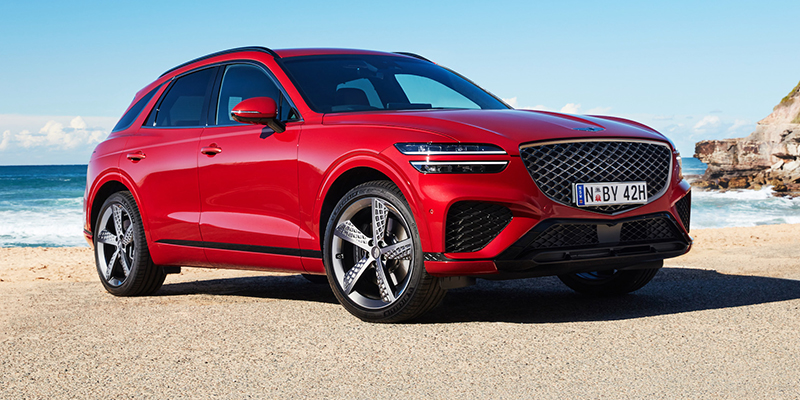
Something odd happened over the past 20 years – many companies that manufactured luxury cars seemed to develop a complex about luxuriousness. Lower down the price bracket, in particular, their offerings became sportier, harder-edged. Sure, they still fitted them out with leather seats and the latest technology, but they eschewed the plushness and opulence that were once a luxury vehicle’s defining attributes.
It’s a gap that Genesis, a comparatively new player in this segment, has elected to fill, and there’s no better expression of this design ethos than the Genesis GV70 SUV. We featured it as part of a three-way comparison with the Lexus NX350 and the Audi Q5 in our September-October edition. During the photo shoot, I spent the bulk of my time in the Lexus and Audi. Both were fine cars, well-engineered and stylish in their own way. But towards the end of the day, I jumped into the Genesis GV70 and found myself grinning with delight.
The GV70’s interior is a throwback to the luxury cars of yore: sumptuous quilted leather seats, swooping and sculpted dashboard lines, and even arty geometric inserts on the centre console and door trim. Audi, BMW and Jaguar would be embarrassed to be seen with anything so ostentatious these days as they hurtle their cars around the Nürburgring.
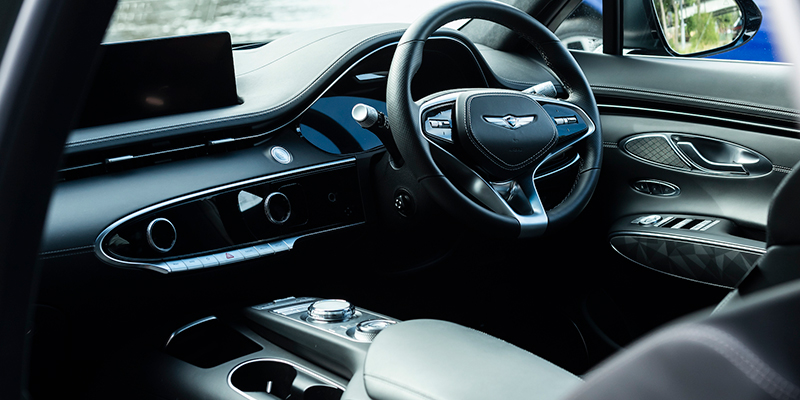
Genesis, however, doesn’t have any preconceptions about what its cars are ‘supposed’ to be and has taken its cues from high-end prestige marques such as Bentley and Aston Martin. That could have been a recipe for disaster, of course – nothing looks worse than a cheap knock-off – but the GV70 works.
The distinctive exterior styling, the quiet and lavish interior, the meaty feel and sound of the 2.5-litre turbo engine, and lots of tech geared towards comfort all mesh to create a driving experience that’s the very embodiment of luxury.
It’s also worth noting how far Genesis has come since it was Hyundai’s luxury brand. The Hyundai Genesis sedan we reviewed back in 2015 was a characterful car, but the cabin was ‘retiree chic’ and nobody would have mistaken its coarse six-cylinder engine for something that came from a German factory. There are no such qualifications with the Genesis GV70. It stood toe-to-toe with the best from Japan and Germany and has emerged with its head held high. – Kris Ashton
Subaru Forester
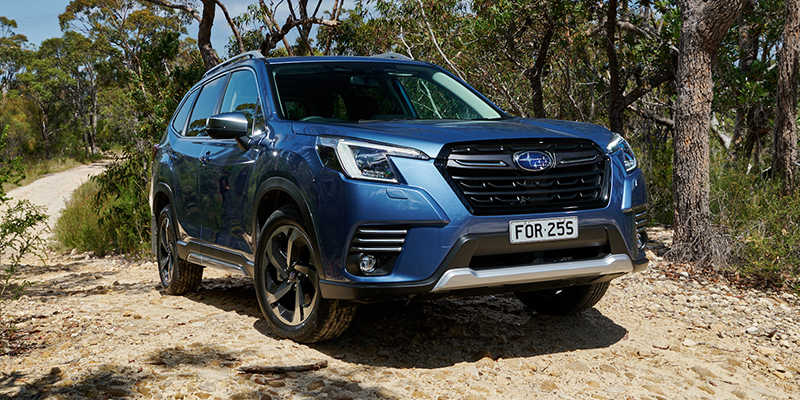
A pioneer in the SUV segment, Subaru quickly figured out a winning formula that married car-like ride and handling with a high level of off-road ability – not an easy thing to engineer, as many new entrants found out along their journey.
Now into its fifth generation, the Forester continues down the same path, offering symmetrical AWD rather than the ‘on demand’ AWD favoured by the competition in which most of the drive is through the front until wheel slip is detected. Aided by its 220mm ground clearance, the Forester’s off-road ability remains unquestioned.
Receiving a mid-life refresh in 2022, the Subaru Forester range starts at $37,890, with the top spec 2.5i-S costing $46,340. Subaru revised the front suspension setup using new springs and dampers to good effect, sharpening it up through corners and improving steering accuracy. Tweaks to the AWD X-Mode system also improved off-road ability.
Subaru’s commitment to safety commenced way back, with the second generation achieving a five-star ANCAP rating. Even in the face of more stringent testing criteria that rating continues for this current generation. Subaru was among the first to use windscreen mounted cameras for safety, which it calls Eyesight Driver Assist technology.
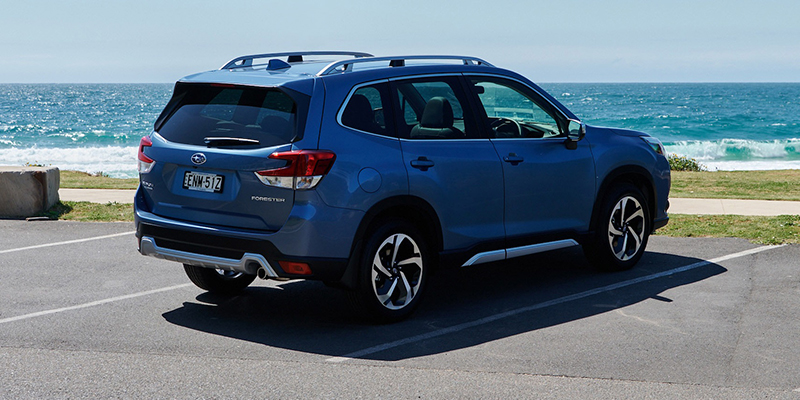
Getting behind the wheel of the Forester is like slipping on your favourite pair of jeans – there’s a sense of relaxed familiarity and comfort. ‘Digital everything’ has become the norm in contemporary cabin design, yet the Forester has resisted this trend and still works nicely. Seat comfort and easy entry and egress are Forester hallmarks and its large front and side windows provide expansive overall vision and a light, airy cabin.
Subaru’s venerable 2.5-litre naturally aspirated boxer engine punches out 136kW and 239Nm and, matched to a CVT, is on par with the opposition in urban driving. Revisions to the engine mounts have improved smoothness and quietness, only making any real noise when pushed to its rev limit. Engineers have done their best to curtail the engine’s thirst to a claimed figure of 7.4L/100km around town (though we tested between 8.0L and 9.0L/100km). Subaru did launch a hybrid line-up, but with the top-spec 2.0-litre Hybrid S nudging $50,000 and failing to deliver meaningful fuel savings, the 2.5-litre remains our pick.
Where other mid-sized SUV competitors have fallen away, Subaru’s constant refining of its Forester keeps it at the forefront of the segment and a favourite to drive. – Tim Pomroy
BMW iX3
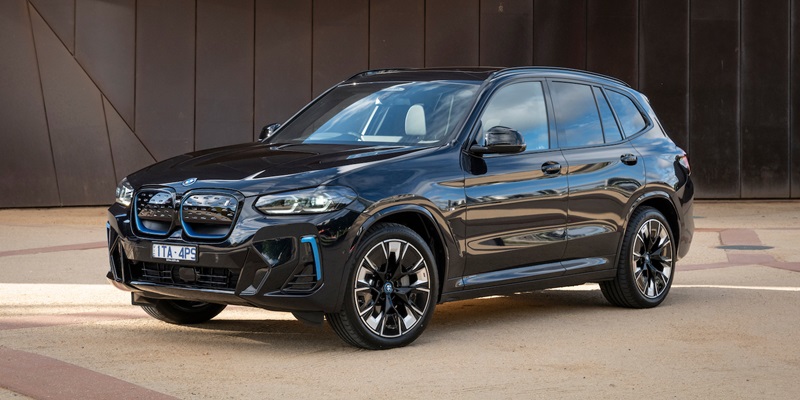
One of the big hurdles facing electric vehicles, be they plug-in hybrid or pure electric, is price. All the ecological credentials in the world count for nought if an average punter is making a side-by-side comparison between a petrol model and its electrified equivalent, only to find the latter is anywhere between $10,000 and $30,000 more expensive. Some brands have demonstrated plug-in hybrids needn’t be prohibitively expensive, but electric motoring hasn’t yet passed the value-for-money test for the average family.
While price is less of a concern at the luxury end of the market, the same considerations apply. It’s hardly an empirical metric, but when evaluating a car, I often ask myself, “If I had the money to spend, would I buy this?” And while I don’t foresee a future where I’ll be able to afford a $115,000 electric vehicle, if I could I’d seriously consider the BMW iX3. This is because, in that context, it offers a real sense of value.
It’s perhaps not surprising, then, that it has been the volume-seller among BMW’s EV line-up, being more practical than the i4 Gran Coupe and much more affordable than the $150,000 iX. BMW reported 237 iX3s sold between January and June 2022 – not enormous numbers in the broader scheme of things, but very respectable in the luxury EV space.
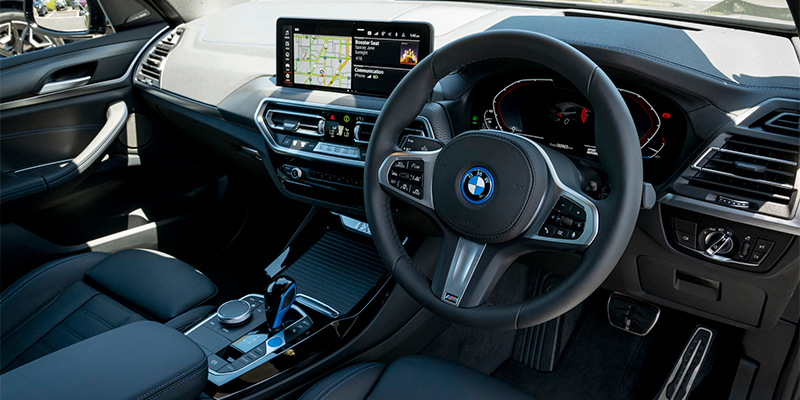
What the iX3 does well that many EVs don’t is tick boxes. Does it have a good range? Yes, BMW claims a more than useful range of 460km. Does it deliver on performance? Yes, 210kW and 400Nm directed to the rear wheels ensure ample get-up-and-go. Is it practical? Yes, built on BMW’s X3 platform, it offers plenty of space for occupants and luggage and the common-sense layout of its myriad instruments is pleasing.
It’s also well equipped, wanting for nothing in safety or technology, and is kitted out with more nice-to-have goodies than many other cars at this price point. Plus, unlike some EVs on the market, it looks good inside and out and provides a true sense of luxury.
While it’s not without its foibles, the BMW iX3 presents as easy and pleasurable to live with day after day, and when the endorphins associated with buying a luxury EV have dispersed, that’s what matters most. – Kris Ashton







